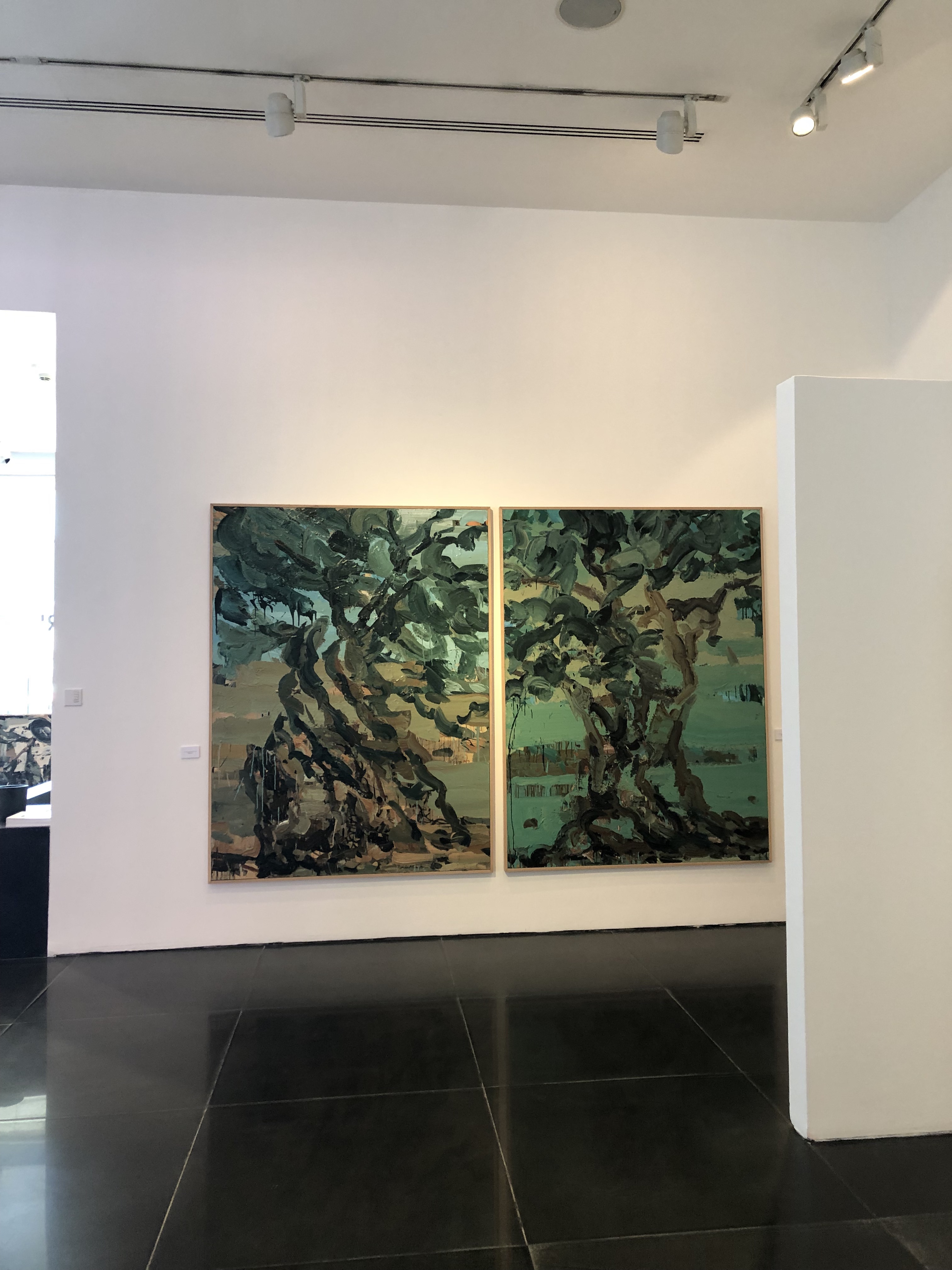Sharjah Biennial 14th editions during 7March – 10 June 2019
I spent a big part of one day (18 March 2019) at this venue – the city of Sharjah in the UAE organises this two yearly event through the Sharjah Art Foundation. The Biennial feature work of around 80 global artists. The theme is the ‘echo chamber’ – about how nowadays consumers often only encounter beliefs that coincide with their own, ultimately reinforcing their existing views and shutting out alternative ideas. The artists seek to put into conversation, through many different stories, a series of provocations on how the shape, form and function of the echo chamber could be renegotiated. I did a tour with one of the Art Foundations members, as the works were displayed across the city. We visited lovely heritage areas to see installations, paintings and video performances.
Drawings of an artist, Rohini Devasher placed the viewer within mythic landscapes and make one wonder about place specific and familiar landscapes. I was also intrigued with cartographic drawings of an artist, named Qiu Zhijiw – new imaginative names is just taking this ‘echo chamber’ discussions to a great open view. A VR installation was also something I have never experienced at a art show – interesting about the Pakistani and American relations. With you VR headset on, you are brought into four recreations of Pakistani life: Ferozsons and old bookshop in Lahore, contemporary tea shops in Karachi, plans from the 1950s for the intended US embassy there, and video material is from the 1980s. One can walk around and navigate the spaces; at the end of one of the scenes, a US drone strike hits a tea shop. The effect is disorienting and part of the intention of the work. The Pakistani born artist, Shezad Dawood isolates a feeling of dislocation as an integral part of his countries’ history. You are aware of the violence the country has suffered through its after-effects, such as its large diaspora, and still murky accounts of political events. A Japanese artists work I enjoyed and was touched by – called Antariksa, by Makoto Murata – these were 153 miniature oilpaintings of artists made during the 15 year war between 1931 – 1945 – her works are replicas of the original exhibition – again a theme about revisiting history of a particular culture group.
I became very aware of lost memories during times of human suffering – if political regimes ‘remove’ the signs where memories are made – the culture suffers tremendously.
Tabari Art Gallery, DIFC, Dubai
Here I visited an exhibition of a Lebanese artist, Tagreed Darghouth’s work.
T
As an artist who grew up in a country where social and political violence has become a big part of the perception of life, she understands misconceptions. She works with acrylic paint, in a very impressionistic style with thick impasto marks and splatters of layered colours of green. The olive tree is such an important part of the culture within the Levant countries – it could even symbolise Palestine? I also learn that its religious symbolism is found in the Quran as well as the Bible.
I get the sense that this art work has power – it speaks to concerns and responsibilities we all have -it is not blaming or hateful, although one can say it is political as it does reflect her world as an artist.
Visit an artist at home: Hazem Harb
I went to this artist by invitaion that read as follow: The works on show will be retrospective, revealing Hazem’s artistic progression from his initial days as an art student in Italy. As well as Hazem’s compelling works spanning over two decades, that offer an artist’s insight into the region and more specifically his home country, Palestine, this is a unique opportunity to experience the artist’s developmental work, creative environment as well as his myriad inspirations that come in the form of archival Palestinian maps, photographs and antiquities, some of which are extremely rare.
Hazem was born in Gaza but currently lives in Dubai. His work immediately puts me in a space where I see architectural style work and the symbolic meaning of memories. He uses maps, photographs to place one into a space where you ask questions about a changed landscape. He tells stories of a landscape disappearing through either new ‘bauhaus style’ buildings by Israel, demolition and uprooting – such as planting other species of trees.

Art Week at Alserkal Avenue 18 – 23 March 2019
This area in Dubai is one of my favourite spaces to visit. I try and do a monthly figure drawing session with one of the galleries in this area. We also regularly have the opportunity to visit a Cinema, Cinema Akil, which brings great “art” movies – in this period I saw, a movie on the life of Japanese Artist, Kusama: Infinity, Capernaum, The Price of Everything and Van Gogh movie: At Eternity’s Gate.
Artworks are showed in different warehouse style galleries and the area is a lively cultural space. I felt very engaged with one of the installations: “fabric(ated)fractures”. These works were done by at least 15 artists from countries as Thailand, Nepal, Myanmar and Pakistan. The works give the viewer a idea of the disruption of border of land issues, dispossession of land, stolen landscapes, ‘ illegal’ people violence and hate within a Buddhist culture, as well as rape. I want to highlight the work of artist, Aysha Jatoi – Resdue. She used piles of white clothes in the space – slowly disappearing as the are being folded and put into stacks in another part of the space. White is the colour of mourning and worn to funerals in many Asian cultures – it reminds one of uncertainty, of trying to make sense of lost — putting it away, folding it….